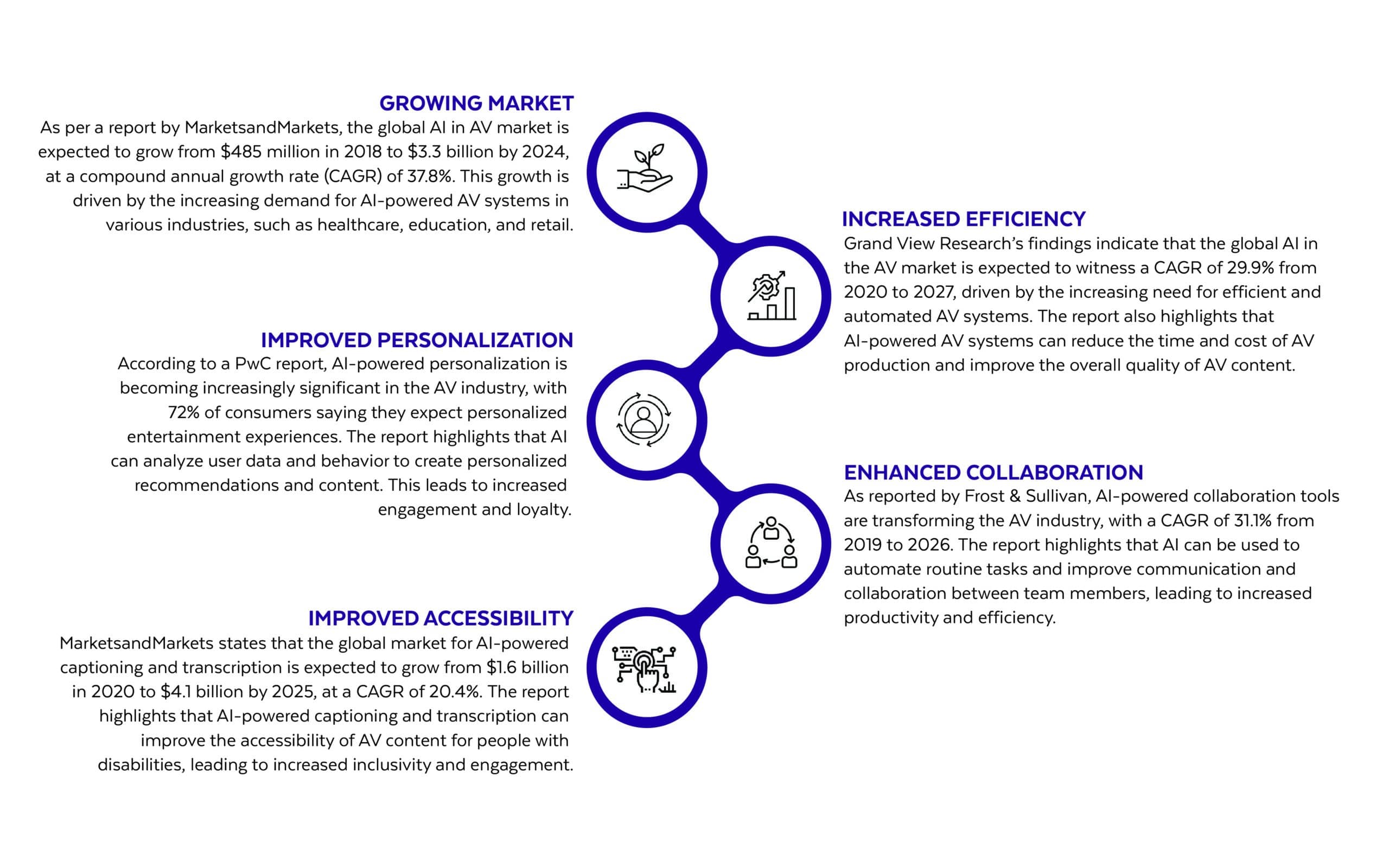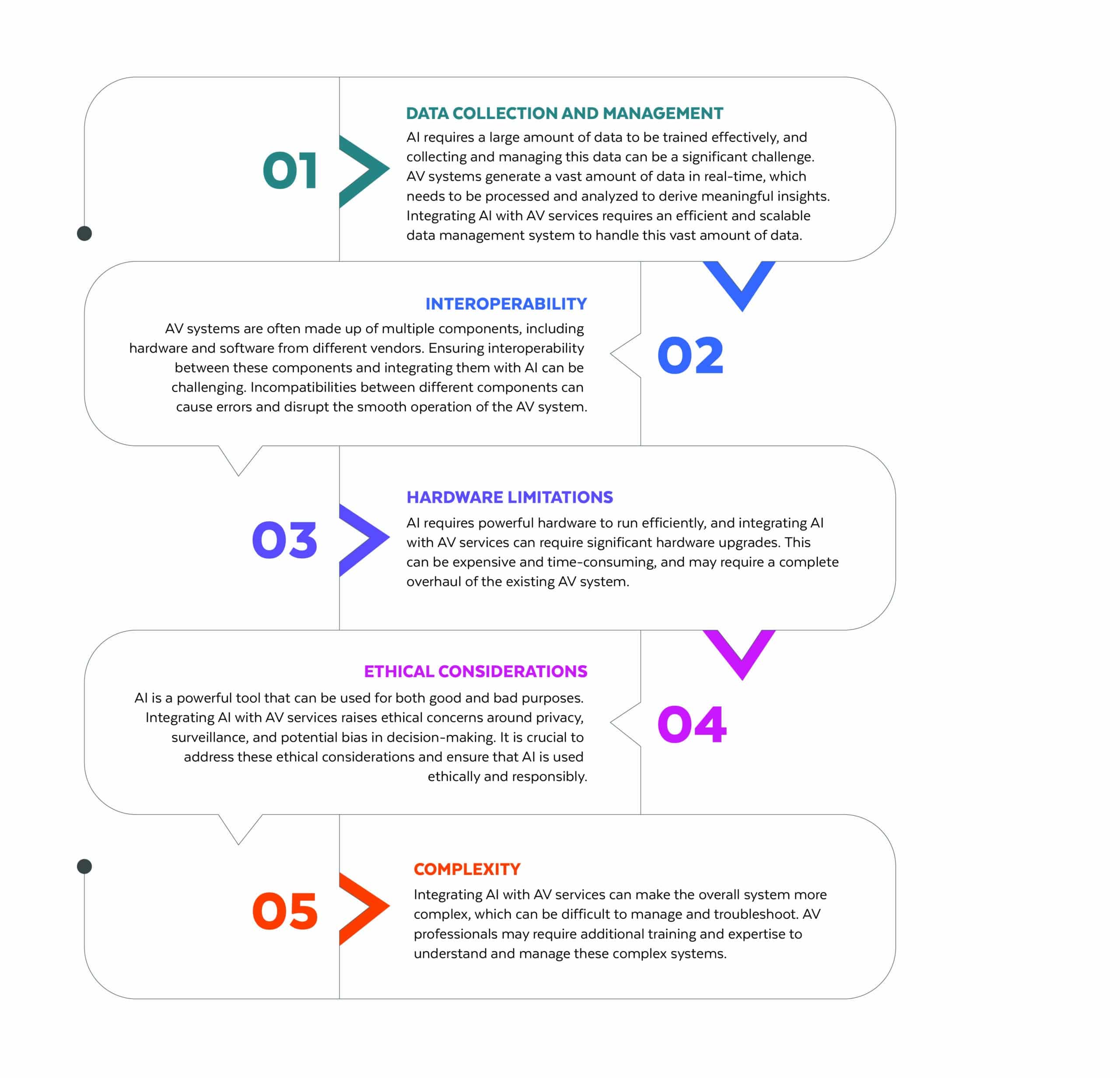
Artificial intelligence (AI) continues to revolutionize the way we live, work and communicate. From smartphones to home appliances, AI is everywhere around us, making our lives easier and more efficient. The latest industry to benefit from Ai’s capabilities is audio-visual services (AV). With AI-powered AV solutions becoming increasingly common, businesses are now able to provide their clients with an exceptional experience that was previously impossible to achieve. In this blog post, we will explore the benefits of integrating AI into AV services and how it can be a game-changer for the future of communication and entertainment. So buckle up as we take you on a journey through the exciting world of AI-powered audio-visual services!
Introduction to AI Integration in AV services
While many people think of AI as advanced gaming characters or Hollywood AIs, like the voice of Siri in the iPhone, there are many practical applications of AI for business. Consider these three applications of AI in AV services:

Benefits of AI Integration in AV Services
When it comes to AV services, AI is quickly becoming a game-changer. By integrating AI into AV services, businesses can reap a number of benefits, including:
In conclusion, integrating AI with AV services can benefit businesses and organizations. They also demonstrate the potential for businesses and organizations to unlock new opportunities and achieve their goals.
How AI is Changing the AV Industry
The integration of artificial intelligence (AI) with audiovisual (AV) technology is transforming the AV industry. Here are some quantifiable data points from reputable sources that highlight how AI is changing the AV industry:

These quantifiable data points from reputable sources demonstrate the significant impact AI is having on the AV industry. As AI technology advances, we can expect even more transformative changes in the AV industry in the years to come.
Challenges and Opportunities with AI Integration
Integrating AI with AV services can be a powerful tool for creating smarter, more intuitive and automated AV systems. However, this integration can present some challenges that need to be addressed. In this article, we will discuss some of the key challenges associated with integrating AI with AV services.

Integrating AI with AV services can be a challenging task that requires careful consideration and planning. Addressing these challenges can help ensure that AI is used effectively and responsibly to create smarter and more intuitive AV systems.
Conclusion
AI integration into AV services has already begun to revolutionize the industry and will continue to do so for years to come. The increased safety, efficiency, and cost savings that come with incorporating this technology are undeniable, making it a game-changer for the future of AV services. As businesses become more data-driven and customer needs evolve, integrating AI into AV services provides companies with the opportunity to be an industry leader and stay ahead of the competition. With these benefits in mind, there is no doubt that AI for AV is here to stay.